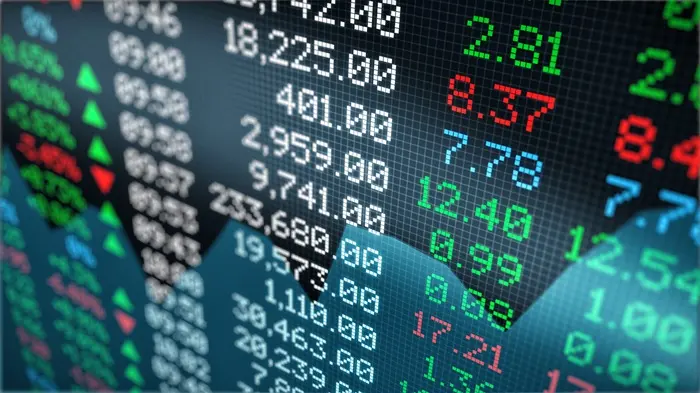The stock market is often seen as a realm of unpredictability, where prices fluctuate constantly based on various factors. Investors, both novice and professional, are constantly looking for indicators to help guide their decisions. One of the most talked-about indicators in technical analysis is the Death Cross. But what does this term really mean? How does it impact the stock market, and why should investors care? In this article, we’ll explain everything you need to know about the Death Cross, including its definition, significance, and how it is used to assess market trends.
What is the Death Cross?
The Death Cross is a technical chart pattern that occurs when a stock’s short-term moving average crosses below its long-term moving average. This is often interpreted as a bearish signal, indicating that the stock or market may be headed for a period of sustained decline.
Moving Averages in Detail
Before diving into the concept of a Death Cross, it’s important to understand the role of moving averages in technical analysis. A moving average (MA) is a statistical calculation used to smooth out past price data to create a trend-following indicator. There are two main types of moving averages:
Simple Moving Average (SMA) – This is the most common type of moving average, where the average of a stock’s price over a specific number of days is calculated.
Exponential Moving Average (EMA) – This type of moving average gives more weight to recent prices, making it more responsive to changes in the market.
When discussing the Death Cross, investors usually focus on two types of moving averages:
50-day moving average (50-MA) – A short-term indicator of stock price movements.
200-day moving average (200-MA) – A long-term indicator, often viewed as a marker of the overall trend.
The Formation of the Death Cross
The Death Cross occurs when the 50-day moving average crosses below the 200-day moving average. This is a significant event in the world of technical analysis because it typically suggests that the stock’s recent momentum has shifted from bullish to bearish. In simple terms, it signifies that the short-term trends are weakening, and long-term trends may also be losing strength.
Why is the Death Cross Important?
For traders and investors, the Death Cross is often seen as a strong bearish signal. But why is it important, and what does it tell us about the market?
1. Sign of Bearish Sentiment
The Death Cross is one of the most widely used indicators of a bearish market. When it occurs, it often reflects that the stock is under pressure and may be on the verge of a sustained decline. Investors who use technical analysis often interpret this event as a signal to sell or short the stock, anticipating further price drops.
2. Indicator of Trend Reversal
In technical analysis, the Death Cross is often viewed as a trend reversal pattern. If a stock has been on a strong upward trend and then experiences a Death Cross, it may signal that the trend is reversing and that the price could fall. This is why it is considered an important signal for traders who want to stay ahead of market movements.
3. Confirmation of Weak Market Momentum
When the 50-day moving average falls below the 200-day moving average, it can confirm that the stock has been losing momentum in both the short-term and long-term. This loss of momentum can be seen as a warning sign, especially if the market or the individual stock has been on a bullish run for an extended period.
How Do Traders Use the Death Cross?
While the Death Cross is often associated with a bearish outlook, it is important to remember that it is just one indicator, and its usefulness depends on the broader context of the market. Traders use the Death Cross in several ways:
1. Selling Signal
The most common use of the Death Cross is as a selling signal. When a trader sees the short-term moving average fall below the long-term moving average, they may decide to sell their position or take profits, especially if the stock has already been on a long bullish run.
2. Shorting the Market
For traders who specialize in short-selling, the Death Cross is often seen as a signal to enter a short position. Short-selling involves borrowing stocks to sell them with the intention of buying them back at a lower price. A Death Cross suggests that the market is likely to continue falling, and short sellers may profit from the price decline.
3. Stop-Loss Strategy
Many traders use stop-loss orders to protect themselves from significant losses. When a Death Cross forms, traders may set tighter stop-loss levels to avoid losing too much money if the stock continues its downward trend.
4. Confirming Other Indicators
Traders rarely rely on just one indicator to make their decisions. The Death Cross is often used in conjunction with other technical analysis tools, such as relative strength index (RSI), moving average convergence divergence (MACD), and support and resistance levels. When the Death Cross aligns with other bearish signals, it can give traders more confidence in their decision to sell or short the stock.
Is the Death Cross Always Accurate?
While the Death Cross is an important technical indicator, it is not always accurate. There are several reasons why a Death Cross may not lead to a sustained market decline:
1. False Signals
Like any technical indicator, the Death Cross can sometimes produce false signals. A false Death Cross occurs when the short-term moving average crosses below the long-term moving average but the price does not continue to decline. In some cases, the market may rebound, and the Death Cross might have been a temporary phenomenon.
2. Lagging Indicator
The Death Cross is a lagging indicator, meaning it is based on past price movements. By the time the 50-day moving average crosses below the 200-day moving average, the market may have already experienced a significant decline. As such, some investors argue that it is not always the best signal to predict future market movements.
3. Market Conditions
The effectiveness of the Death Cross can also depend on broader market conditions. For example, in a strong bull market or during periods of economic growth, the Death Cross may not have the same impact as it would in a market that is already in a downtrend.
The Golden Cross vs. The Death Cross
While the Death Cross signals a bearish market, its opposite, the Golden Cross, is a bullish signal. The Golden Cross occurs when the short-term moving average (50-MA) crosses above the long-term moving average (200-MA). This indicates that the stock is in an uptrend, and many investors interpret it as a signal to buy.
The Golden Cross and the Death Cross are often compared because they represent opposite ends of the market spectrum. A Golden Cross is typically viewed as a sign of strength, while a Death Cross is seen as a sign of weakness.
Historical Performance of the Death Cross
The Death Cross has been widely discussed in the media and among financial analysts, but its predictive power is a matter of debate. Historically, the Death Cross has often been associated with significant market declines, but not always.
Case Study: The 2008 Financial Crisis
One of the most notable occurrences of the Death Cross happened during the 2008 financial crisis. The stock market suffered significant losses, and the formation of the Death Cross was seen as an early warning sign of the crisis. However, it’s important to note that this event was influenced by a variety of complex factors, including economic instability, government intervention, and systemic risk.
Case Study: The 2020 Market Crash
The Death Cross also appeared during the early stages of the COVID-19 market crash in 2020. The market experienced a sharp decline as the pandemic spread across the globe, and the formation of the Death Cross was seen as a reflection of market panic and uncertainty.
In both of these cases, the Death Cross preceded major market declines, but it’s important to consider the broader economic context before drawing conclusions.
Limitations of the Death Cross
Despite its popularity, the Death Cross is not without its limitations. It is just one tool in a trader’s toolbox and should not be relied upon exclusively to make investment decisions. Other factors, such as economic conditions, corporate earnings reports, and geopolitical events, can have a significant impact on stock prices.
1. Lagging Nature
Because the Death Cross is a lagging indicator, it can often occur after the market has already started to decline. This means that it may not always provide timely warnings, especially for investors looking for real-time market predictions.
2. False Signals
As mentioned earlier, the Death Cross can sometimes provide false signals, especially during periods of market consolidation or when prices are moving in a sideways pattern. In these cases, the Death Cross may not lead to a prolonged downtrend.
3. Overreliance on Technical Indicators
Relying solely on technical indicators like the Death Cross can be dangerous. Fundamental analysis, which looks at factors like company performance, earnings, and industry trends, should also be taken into account when making investment decisions.
Conclusion
The Death Cross is a widely recognized technical analysis pattern that signals potential market weakness. It occurs when a short-term moving average crosses below a long-term moving average and is often interpreted as a bearish signal. While it is an important tool for traders, it is not infallible. The Death Cross should be used in conjunction with other indicators and within the context of broader market conditions to help investors make informed decisions.
Ultimately, whether the Death Cross signals a major market decline or a temporary setback depends on a variety of factors, and traders should always be cautious when using it in isolation. It is just one piece of the puzzle in understanding the complexities of the stock market.
Related topics:

































